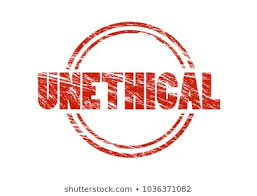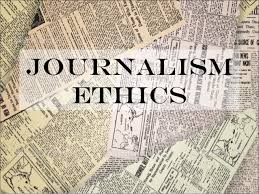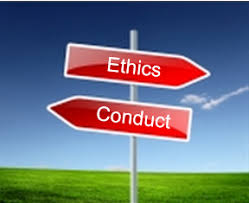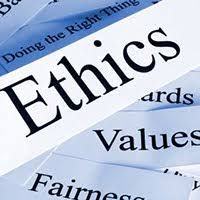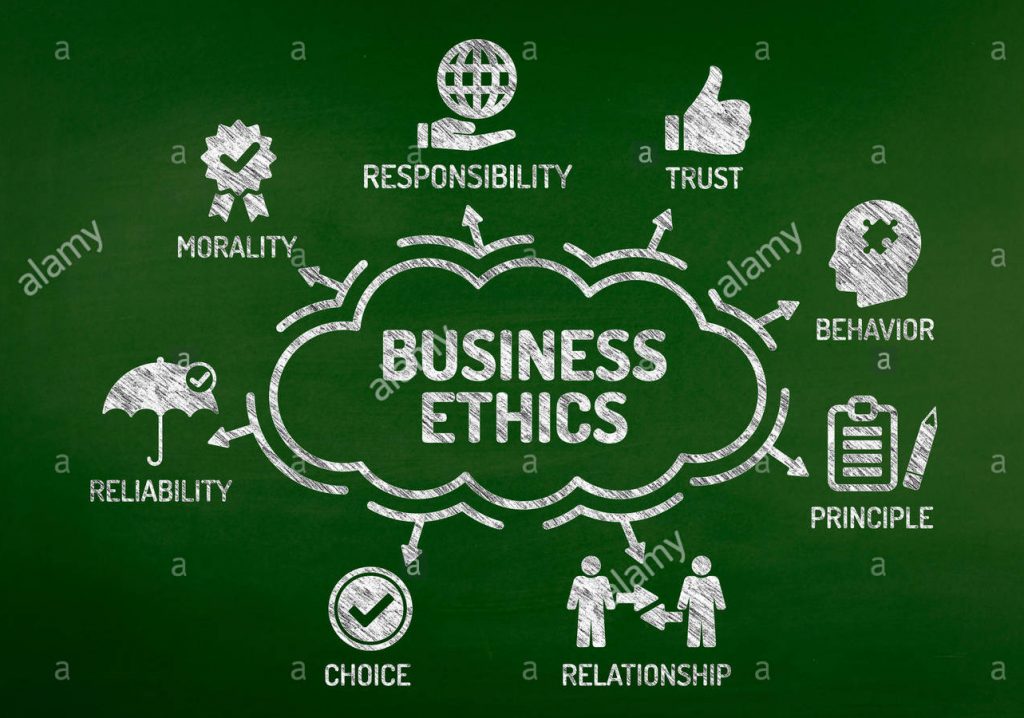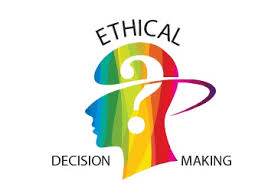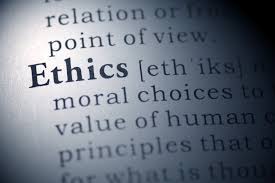
Implications of Ethical Dilemmas in Practice
Order Instructions:
Assignment instructions
Implications of Ethical Dilemmas in Practice
One way of broaching the topic of ethics in professional practice is to focus on particular ethical dilemmas that arise in the research or practice that surrounds management activities themselves. For example, well-known ethical dilemmas exist in the field of human resources, and other dilemmas surround the handling of financial transactions and decisions.
Search the Walden Library for a scholarly or practitioner article in a peer-reviewed journal that deals with an ethical dilemma in a management context. How might you research the dilemma presented in the article? Would you examine causation, interventions, solutions, structural issues, or other aspects? Select one or two aspects of the issue presented, and think about how you might formulate a research-oriented approach that would benefit the larger professional practice.
Begin by presenting a brief overview of the article you found. Next, present the ethical dilemma, followed by your research approach and its potential practice-based benefits.
——————————————————————————–
With these thoughts in mind:
Post your analysis to the Discussion by Day 3. Be sure to include at least two questions to elicit suggestions and responses from your colleagues.
Article !!!! (see below)
Ethics
E-mail and Ethical Issues
Loretta J. Bradley
Bret Hendricks
Texas Tech University
The proliferation of the use of e-mail and texting has created some ethical dilemmas for family counselors. Although e-mail can expand and encourage communication, it is not problem free and, in fact, can pose problems.
There are issues with privacy, confidentiality, and maintaining an appropriate professional relationship. Family counselors should be aware of the promises and pitfalls in using e-mail and related technologies.
Keywords: e-mail; family counseling;confidentiality; ethical dilemmas;counseling relationship
Jason, a family counselor in private practice laments, ‘‘I checked my e-mail today and realized that a client had sent me an e-mail last week about his increasing problems with his family. Until today, I was unaware that he had sent that e-mail. I don’t check my e-mail every day. Now I am wondering if I’m legally liable for answering that e-mail that was sent outside the counseling session?’’ If I do answer that e-mail, will that be considered counseling? If I don’t answer that e-mail, am I ignoring my ethical duty as family
counselor?
In the past decade, e-mail has created new ethical
dilemmas for family counselors. The questions listed above represent a growing body of questions produced by the rapid increase of e-mail use. The proliferation of the use of e-mail and texting has increased to the extent that many clients of family counselors use these methods of communication so
often that verbal communication becomes a lesser preferred mode of communication (Finn, 2006; Fisher & Fried, 2008; Haberstroh, Duffey, Evans, Gee & Trepal, 2007; Walther, 2007). Electronic communication has spawned a new language,
seemingly understood only by those who practice
it. For example, although the word ‘‘texting,’’ a verb, was not seen in Webster’s 2002 Dictionary (Landau, 2002), is now used so frequently that the word is now used as standard English. The phrase ‘‘B hr B4 H gts 2 th crb’’ (‘‘Be here before he gets home’’) presents the reader with a plethora of contextual meanings and misunderstandings while the message is clearly understood by clients who are contemporary e-mail users.
Given the potential ethical and legal issues generated by e-mail, this article is written to explore the ethical concerns posed by e-mail in family counseling. Specifically, this article will focus on the ethical dilemmas generated from the use of e-mail in family counseling while simultaneously trying to answer the question, is e-mail friend or foe? The authors wish to point out that our focus is on e-mail, not internet counseling, which has been addressed recently
in the American Counseling Code of Ethics (American
Counseling Association [ACA], 2005) and earlier in the ACA Standards for Online Counseling (ACA, 1999).
TECHNOLOGY EXPANSION
The past three decades, and especially the last decade, have produced enormous advances in technology. Ten years ago, McMinn, Buchanan, Ellens, and Ryan (1999) described three waves in the advancement of technology. The three were detailed as those technologies that increase office
efficiency, enhance clinical services, and improve new, emerging technologies. The researchers identified the first wave as advances in fax machines, word processors, answering machines, and voice mail machines. Now, 10 years later, the first wave technologies have been integrated into daily work activities. Second wave technologies were defined as advances to enhance test administration, scoring,
and interpretation. McMinn et al. (1999) identified third wave technologies that affect practice. In 1999, when their article was written, the third wave included the use of telephone, e-mail, and chat rooms. Now, in 2009, as the technology horizon has expanded, the division between the first, second, and third wave has blurred because all three waves are entrenched in the work place. Consequently,
Authors’ Note: Correspondence concerning this article should be addressed to Loretta Bradley, Texas Tech University, COE Box 41071, Lubbock, TX 79409; e-mail:loretta.bradley@ttu.edu.
THE FAMILY JOURNAL: COUNSELING AND THERAPY FOR COUPLES AND FAMILIES, Vol. 17 No. 3, July 2009 267-271 DOI: 10.1177/1066480709338293
# 2009 SAGE Publications 267
Downloaded from tfj.sagepub.com at WALDEN UNIVERSITY on November 4, 2014
e-mail, which was yesterday’s innovative technology, has become today’s ‘‘common’’ technology. In fact, e-mail is the most frequently used Internet resource (Finn, 2006).
E-MAIL EXPANSION
The use of e-mail, which came into existence in 1971,
continues to expand in the United States. In 2001, 57% of Americans responded that they are Internet users (Shaw & Shaw, 2006). Today that percentage has increased to 72.5% (Parks, 2008). The Radicati Group (2009 estimated that the number of e-mails sent daily is approximately 210 billion with individual corporate workers sending an estimated 156 billion per day. The use of e-mail is not limited to a single profession but instead is prevalent in most professions, including counseling. In 2008, 81% of those individuals in the United States reported that they used e-mail at least occasionally (Finn, 2006; Madden & Jones, 2008).
Additionally, according to the Pew Report (2009) of
those who use e-mail, 80% reported that e-mail has
increased their ability to do their job while 58% reported that e-mail has allowed them more flexibility in their work hours. Conversely, workers reported that most of the messages that they receive at work are personal in nature with online shopping reported by 22% of the respondents. With regard to percentages, the Pew report further indicated that
50%of all workers in the United States check their e-mail on weekends with 22% reporting that they checked their e-mail ‘‘often’’ on weekends.
Articles have been written about the expansion of e-mail between business provider and consumer (Armstrong, 2002; Armstrong, Mazzucca, Hansmann, & Groth, 2001; Brynko, 2007; Hoffman, Hartman, & Rowe, 2003; Kelleher & Hall, 2005; Peek, Peek, Roxas, Robichaud, & Blanco, 2007; Sunner, 2005; Womack, Braswell, & Harmon, 2004), counselor and client (Alemi et al., 2007; Bloom, 1998; Caffery & Smith, 2006; Haberstroh et al., 2007; Haslam & Harris, 2004; Shaw & Shaw, 2006; Watson, Jones, & Burns, 2007), lawyer and client (Hricik&Scott, 2007;Walther, 2007), nurse and patient (Caffery, Stewart, & Smith, 2007; Cleary &
Freeman, 2005; DeSantis & Keller, 2007; Edwards, 2008; Kralik, Price, Warren, & Koch, 2006), physician and patient (Brooks & Menachemi, 2006; Constantine, Crane, Noll, Doswell, & Braxter, 2007; Granberry, 2007; Kivits, 2006; Koo & Skinner, 2005; Kuszler, 2000; Nijland, vanGemert- Pijnen, Boer, Steehouder, & Seydel, 2008; Torrance, Lasome, & Agazio, 2002), psychologist and client (Fisher
& Fried, 2008), social worker and client (Finn, 2002, 2006; Parker, 2008), and government (Freeman, 2007).
Since the first e-mail was sent in 1971, e-mail has
evolved and expanded at an unprecedented rate, and there is every expectation that e-mail communication will continue to expand. Although the expansion of e-mail use has been overwhelming, e-mail’s acceptance among users is mixed. E-mail has generally been viewed positively with 72% of workers reporting that e-mail has improved their
ability to do their jobs; conversely, e-mail has been viewed as problematic for about one fourth of workers (Finn, 2006).
Finn reports that a Pew Internet and American Life Project Poll studying e-mail in the workplace found that one fourth of the workers experienced difficulty with e-mail, 22% of workers reported that e-mail caused misunderstandings at work, 28% found e-mail distracting at work, 23% reported e-mail created stress at work, and 16% said e-mail advanced
gossip.
PROBLEMATIC ISSUES
As the Finn (2006) study indicated although e-mail can open up communication, it is not problem free, and in fact can pose problems. Zambroski (2006) cites the following as problems resulting from e-mails. About 2 years ago, a Boston attorney feeling offended by an e-mail from a client forwarded their disagreements via e-mail to a colleague. Little
did he know that this e-mail would spread to the Boston legal community to be eventually aired on ABC’s Nightline News. In another newscast, CNN News ran a story in which they reported that e-mail is ‘‘fodder’’ for litigation. CNN News further reported on e-mails involved in legal issues.
Specifically, a Massachusetts class-action suit was filed over the dangers of the drug combination, Phen-Fen. In that suit, the court allowed an e-mail to be admitted. In this e-mail, the company executive wrote, ‘‘Do I have to look forward to spending my waning years writing checks to fat people worried about a single lung problem?’’ In another
court case, Chevron settled a US$ 2.2M lawsuit that involved an interoffice e-mail giving 25 reasons why beer is better than women. Zambroski concluded his article by encouraging companies to decrease their e-mail vulnerabilities by having an e-mail policy that educates employees about practices involving e-mail in the workplace. In his summary statement, he admonished that e-mail users should not send
an e-mail in anger or haste, and furthermore, he said they should not send personal e-mails from their work accounts.
He encouraged e-mail users to maintain virus protection, encrypt all e-mails, insist on periodic backups, use antivirus protection, and use strong passwords. Although the Zambroski article was written for the business community, its advice is relevant for the counseling community.
COUNSELING AND E-MAIL
E-mail communication between counselor and client
offers opportunities to improve counseling services. That is, e-mail offers a fast, economical method of communication that may serve as a positive adjunct to the family counseling relationship. For example, the time and place to communicate via e-mail are selected by both
THE FAMILY JOURNAL: COUNSELING AND THERAPY FOR COUPLES AND FAMILIES / July 2009
268
Downloaded from tfj.sagepub.com at WALDEN UNIVERSITY on November 4, 2014
parties. E-mail can help the counselor and client avoid the rush and hasty response that can occur in a telephone conversation.
For both the counselor and client, e-mail can be
a convenient and flexible mode of communication. Unlike a telephone conversation, e-mail information can be printed and filed. Also e-mail is unique in that it provides a comfortable way for the counselor and client to share information.
However, despite its advantages, e-mail has some challenges. Some challenges involve the counseling relationship, confidentiality and privacy, limits to confidentiality in e-mail and counseling, checking e-mail, and the signature.
COUNSELING RELATIONSHIP
Whether the counseling mode is face-to-face family
counseling, e-mail communication or a combination of the two, the counseling relationship is of paramount importance.
To say that the relationship is important is an understatement for indeed it is critical. In order for counseling to be successful, a working alliance (relationship) must be established whereby trust is essential. Just as the relationship must be established and maintained in face-to-face family counseling, the relationship is likewise critical in e-mail communication.
CONFIDENTIALITY AND PRIVACY
The broad category of confidentiality includes privacy information, informational notices, client waiver, records of electronic communication, and electronic transfer of client information (Manhal-Baugus, 2001). There are some risks problematic to confidentiality. In a recent study by Finn (2006), it was reported that 1 in 20 social workers reported that a client’s confidentiality was violated as a result of e-mail. The counselor must acknowledge to the client
that confidentiality cannot be guaranteed. Although
sometimes imperfect, the counselor must take precautions to try to insure confidentiality. For example, the counselor must implement procedures to try to prevent a third party from receiving the information. A common security precaution
is encryption, which is recommended to reduce the risk of disclosure. Also, it is critical that computers are protected by firewall software. Just as in a face-to-face family counseling session, the counselor using e-mail must discuss the limits to confidentiality. Furthermore, both counselor and
client must discuss what is acceptable to send in e-mails.
IS E-MAIL SYNONYMOUS WITH COUNSELING?
An important question is when the family counselor
sends an e-mail, is this e-mail considered counseling? Our response to this question is that if the e-mail involves any aspect of counseling, then it will be viewed as clinical and thus considered as counseling. Possibly one exception is an administrative e-mail in which the counselor merely
gives the time, date, place of the appointment or gives the notice that because of unforeseen circumstances, the office is closed today. The authors believe that if the e-mail is strictly administrative, it is likely not to be viewed as counseling. If, however, the e-mail involves any aspect of counseling, then it will be considered counseling and will therefore become a part of the client’s counseling record.
These records will be subject to the same rules and
procedures, including subpoena, as the other portions of the official record.
FREQUENCY OF CHECKING E-MAIL
If the family counselor gives his or her e-mail address to clients, must that counselor check the e-mail every hour? Every day? Every week? The subject issue here is not how often the counselor must check the e-mail but what has the counselor communicated to the client about how frequently e-mail will be checked. In other words, the family counselor
must inform the client by both written and verbal communication of when e-mails are checked. If the counselor decides to use e-mail communication, the counselor must indicate the policies and procedures regarding e-mail use.
Furthermore, the counselor must inform the client about the limitations (e.g., security, confidentiality, unauthorized readers) of e-mail.
E-MAIL SIGNATURE
While most counselors using e-mail to communicate
with clients often focus on what is written in the body of the e-mail, the authors wish to point out that it is equally important to concentrate on the signature. Zur (2008) concludes that every e-mail sent to a client must contain a signature.
In addition to the typical signature listing names and contact information, Zur states that the signature must include information about such issues as confidentiality, security, privacy, unauthorized access, and intended user. With regard to the notice of confidentiality, Zur states the signature statement should indicate ‘‘this e-mail and any attachments
are intended only for use by the addressee and may
also contain privileged or confidential information’’ (p. 3).
Thus, it is clear that Zur is saying that e-mail involved in counseling must be expanded to include the above items.
DISCUSSION AND SUMMARY
E-mail used by family counselors is an interpretive
endeavor. In this article, the authors used the theme of ‘‘counselor be aware’’ when using e-mail. Furthermore, the authors suggested that the use of e-mail by family counselors is a relatively new process that is in a stage of Bradley, Hendricks / E-MAIL AND ETHICAL ISSUES 269
269
Downloaded from tfj.sagepub.com at WALDEN UNIVERSITY on November 4, 2014
‘‘developing.’’ Because the use of e-mail is developing, the authors focused on several ethical dilemmas that counselors cannot overlook. In some instances, the authors were able to give definitive answers, while in other instances, we could
only make suggestions on how to avoid potential ethical and legal problems. While some family counselors may decide to use e-mail communication with clients, others may decide to avoid the use of e-mail. For counselors using e-mail, we believe the counselor should use e-mail as an adjunct to and
not a replacement for face-to-face counseling.
It is important to note that the authors are not attempting to tell the family counselor to use or not to use e-mail in counseling. Instead, we were trying to recommend that if the counselor decides to use e-mail in counseling, then the counselor must be aware of potential ethical challenges.
Regardless of the challenge, the counselor must attend to the welfare of the client. Essentially, this means that the counselor must practice the highest ethical principles at all times. Because it is a given that ethical codes will not address all of the potential ethical issues that may arise, family counselors must be proactive in attempting to foresee and address potential ethical problems. When using e-mail, family counselors must create a written statement pertaining to e-mail communication, which includes policies about e-mail prior to the first e-mail being sent. The written statement, which should be a part of initial informed consent, must be signed by the client. Additionally, family counselors should discuss their e-mail policies with their clients thereby
providing further clarification of the policies in effect. In other words, counselors should not simply assume that clients understand e-mail policies by merely reading the policies; instead, family counselors must discuss their policies regarding e-mail to assure client understanding.
Although most of this article has focused on protection for the client, family counselors must also be aware of the ethical domains that directly affect their own protection. For example, family counselors must decide whether they are going to engage in the use of e-mail at all. If yes, then they must decide the extent to which they will use e-mail.
Additionally, they must examine such issues as, although not limited to, their technological competence, counseling competence, counseling relationship, ethics, and liability.
The authors suggest, in regard to liability, that liability insurance covering e-mail communication with clients be obtained because communication by e-mail is likely to be considered counseling. If e-mail is to be used, even as an adjunct to counseling, family counselors should be aware of current literature concerning e-mail use from other fields outside professional counseling because other professions
are also grappling with similar issues. Furthermore, they might contact family counselors who have used e-mails in counseling. The experience of other professionals will likely provide information to enhance the counselor’s competence.
In summary, e-mail developed from being a simple,
efficient, and inexpensive means of communication for short messages into a broad, complex means of communication that has spanned many areas including counseling. On the basis of issues raised in this and other articles, family counselors are encouraged to learn more about the relevant
ethical and legal issues related to e-mail before services are provided via e-mail.
REFERENCES
Alemi, F., Haack, M., Nemes, S., Aughburns, R., Sinkule, J., & Neuhauser, D. (2007). Therapeutic e-mails. Substance Abuse Treatment, Prevention, and Policy, 2, 7-18.
American Counseling Association. (1999). Online counseling. Alexandria, VA: Author.
American Counseling Association. (2005). ACA code of ethics. Alexandria, VA: Author.
Armstrong, I. (2002). In search of ideal e-mail security. Info Security News Magazine, 12, 13-15.
Armstrong, I., Mazzucca, M., Hansmann, B., & Groth, N. (2001). E-mail security: Dangerous waters ahead. Info Security News Magazine, 12, 24-30.
Bloom, J. W. (1998). The ethical practice of WebCounseling. British Journal of Guidance and Counselling, 26, 53-59.
Brooks, R., & Menachemi, N. (2006). Physicians’ use of e-mail with patients: Factors influencing electronic communication and adherence
to best practices. Journal of Medical Internet Research, 8, 2-6.
Brynko, B. (2007). Message gate: Securing your e-mail channels. Information Today, 24, 41-43.
Caffery, L., & Smith, A. (2006). The relation between response time and reutilization of an e-mail based counseling system. Journal of Telemedicine
and Telecare, 12, 19-22.
Caffery, L., Stewart, S., & Smith, A. (2007). An analysis of the security and privacy of e-mail messages used in e-mentoring. Journal of Telemedicine and Telecare, 13, 24-26.
Cleary, M., & Freeman, A. (2005). E-mail etiquette: Guidelines for mental health nurses international. Journal of Mental Health Nursing, 14, 62-65.
Constantine, R., Crane, P., Noll, B., Doswell, W., & Braxter, B. (2007).
Exploring the feasibility of e-mail—Mediated interaction in survivors of abuse. Journal of Psychiatric and Mental Health Nursing, 14,
291-301.
DeSantis, S., & Keller, D. (2007). Ethics now and for the future in our high-tech e-mail world. FDCC Quarterly, 58, 75-86.
Edwards, M. (2008). Patient records. Practice Nurse, 36, 16-18.
Finn, J. (2002). MSW student perceptions of the efficacy and ethics of internet-based therapy. Journal of Social Work Education, 38, 403-419.
Finn, J. (2006). An exploratory study of e-mail use of direct service social workers. Journal of Technology in Human Sciences, 24, 1-20.
Fisher, C., & Fried, A. (2008). Internet-mediated psychological services and the American Psychological Association Ethics Code. In
D. Bersoff (Ed.), Ethical conflicts in psychology (4th ed., pp. 376-383). Washington, DC: American Psychological Association.
Freeman, E. (2007). E-mail privacy and the wiretap Act: U.S. v. councilman. Information Systems Security, 16, 182-185.
Granberry, N. (2007). Email—From ‘‘to’’ to ‘‘send.’’ Journal of the American Association of Occupational Health Services, 55, 127-130.
Haberstroh, S., Duffey, T., Evans, M., Gee, R., & Trepal, H. (2007). The experience of online counseling. Journal of Mental Health Counseling,
29, 269-282.
Haslam, D., & Harris, S. (2004). Informed consent documents of marriage and family therapists in private practice: A qualitative analysis. American
Journal of Family Therapy, 32, 359-374.
270 THE FAMILY JOURNAL: COUNSELING AND THERAPY FOR COUPLES AND FAMILIES / July 2009
270
Downloaded from tfj.sagepub.com at WALDEN UNIVERSITY on November 4, 2014
Hoffman, W., Hartman, L., & Rowe, M. (2003). You’ve got mail and the boss knows: A survey by the center for business ethics of companies’ e-mail and internet monitoring. Business and Society Review, 108,
285-298.
Hricik, D., & Scott, C. E. (2007). Avoiding conflicts from client e-mails.
Journal of Internet Law, 11, 1-17.
Kelleher, Z., & Hall, H. (2005). Response to risk: Experts and end-user perspectives on e-mail security, and the role of the business information professional in policy development. Business Information Review, 22, 46-52.
Kivits, J. (2006). Informed patients and the internet: A mediated context for consultations with health professionals. Journal of Health Psychology,
11, 269-282.
Koo, M., & Skinner, H. (2005). Challenges of internet recruitment: A case study with disappointing results. Journal of Medical Internet Research, 7, 1-6.
Kralik, D., Price, K., Warren, J., & Koch, T. (2006). Issues in data generation using e-mail group conversations for nursing research. Journal of
Advanced Nursing, 53, 213-220.
Kuszler, P. C. (2000). A question of duty: Common law legal issues resulting from physician response to unsolicited e-mail inquiries. Journal of Medical Internet Research, 2, 1-17.
Landau, S. (Ed.). (2002). The new international Webster’s Collegiate Dictionary of the English language. Naples, FL: Trident Press.
Madden, M., & Jones, S. (2008). Pew internet and American life project poll. Retrieved January 29, 2009, from http://www.pewinter.net.org/
pdfs/pip_networked_workers_final.pdf
Manhal-Baugus, M. (2001). E-therapy: Practical, ethical, and legal issues. Cyber Psychology and Behavior, 4, 551-563.
McMinn, M. R., Buchanan, T., Ellens, B. M., & Ryan, M. K. (1999). Technology, professional practice, and ethics: Survey findings and implications.
Professional Psychology: Research and Practice, 30, 165-172. Nijland, N., vanGemert-Pijnen, J., Boer, H., Steehouder, M., & Seydel, E. (2008). Evaluation of internet-based technology for supporting selfcare:
Problems encountered by patients and caregivers when using self-care applications. Journal of Medical Internet Research, 10, 13-18.
Parker, J. (2008). E-mail, ethics and data collection in social work research: Some reflections from a research project. Evidence and Policy: A
Journal of Research, Debate, and Practice, 4, 75-83.
Parks, A. (2008). 21% of U.S. heads of households don’t use e-mail, internet.
Retrieved January 27, 2009, from http://www.marketingcharts.
com/direct/21-of-US-heads-of-household-dont-use-e-mail-internet-4686/
Peek, L., Peek, G., Roxas, M., Robichaud, L., & Blanco, H. (2007). Team learning and communication: The effectiveness of e-mail based ethical discussions. Business Communication Quarterly, 70, 165-185.
Pew Report. (2009). Networked workers. Retrieved February 12, 2009,
from http://www.pewresearch.org/pubs/networkedworkers
Radicati Group. (2009). Addressing e-mail chaos. Retrieved January 23, 2009, from http://www.radicati.com/
Shaw, H. E., & Shaw, S. F. (2006). Critical ethical issues in online counseling: Assessing current practices with an ethical intent checklist. Journal
of Counseling and Development, 84, 41-53.
Sunner, M. (2005). E-mail security best practice. Network Security, 12, 4-7.
Torrance, R., Lasome, C., & Agazio, J. (2002). Ethics and computermediated communication: Implications for practice and policy. The Journal of Nursing Administration, 32, 346-353.
Walther, D. (2007). Confounded computers. American Journal of Family Law, 19, 227-228.
Watson, M., Jones, D., & Burns, L. (2007). Internet research and informed consent: An ethical model for using archived e-mails. International Journal of Therapy and Rehabilitation, 14, 396-403.
Womack, L., Braswell, D., & Harmon, K. (2004). E-mail policy enforcement: Techniques and legality. Journal of Accounting and Finance Research, 12, 102-108.
Zambroski, R. (2006, May/June). Think before you send. Communication World, 38-40.
Zur, O. (2008). I love these e-mails, or do I? The use of e-mails in psychotherapy and counseling. Retrieved January 12, 2009, from http:// www.zurinstitute.com/e-mail in therapy.html
Loretta Bradley, Educational leadership & Psychology-Counselor Education Program, Texas Tech University.
Bret Hendricks, Educational leadership & Psychology-Counselor Education Program, Texas Tech University.
SAMPLE ANSWER
Ethical Dilemma
Introduction
People encounter ethical dilemmas in their research and practice that affect their undertakings. Conflicts between moral imperatives lead an individual to obey one decision causing transgression of the others (Serpil, 2012). The author discusses on ethical dilemma concept in practice as presented in an article.
Overview of the article
The article ‘E-mail and Ethical Issues’ by Lorettta Bradley provides an insight to the increased use of email and texting. The article explores on the ethical dilemmas that family counseling face while using e-mail to render their services. Managers as well use this form of communication to reach to their customers as well as to engage in personal issues. This form of communication present various ethical dilemmas and it is important for the users especially counselors to understand these ethical dilemmas to avoid the same. Email is not problem-free and has potential to pose various problems to the customers as well as the managers such as counselors. Some of the issues that characterize email communication include maintaining of professional relationship, privacy and confidentiality.
Ethical dilemma
Various ethical concerns manifest in the article. One of the concerns is using email in maintaining of professional relationship. Emails offer fast and economical method of communication; it therefore can promote family counseling relationships. Family counselor can use this mode of communication to provide these services. However, for counseling to be successful it requires face-to-face and work alliance relationship between the two. This is the appropriate way to achieve trust and as well impact on the counseling. Therefore, it becomes an ethical dilemma when it comes to making decision to provide family counseling using email a supposed to meeting the client face to face.
Confidentiality and privacy of the client and the customer is another ethical dilemma. Client has a right to confidentiality and privacy of information provided through email (Husser, Gautier & André & Lespinet-Najib, 2014). Ethical dilemma arises when it comes to determining what kind of information send through email is considered as private and confidential and which one does not. Furthermore, selecting and categorizing the message from email as relating to counseling or administrative posses ethical dilemma.
It is also important for the family therapist to inform the client when they will check their emails to avoid misunderstanding that may result to ethical dilemma. The family counselor must indicate the procedures and policies regarding use of email as well inform the client on the limitations inherent in use of email such as unauthorized readers, confidentiality and security.
Research oriented approach
A research-oriented approach that would benefit the larger professional practice is evidenced based. This approach would allow collection of systematic data through interview, observation and experiment and testing of hypothesis to reach decisive decisions that would help provide solutions to such ethical problems (Dale, 2005).
Potential practice-based benefits
This practice would accrue various benefits to professional practice. It will provide enough evidence on the issue and scenarios that ethical dilemma occurs. This scope of knowledge will provide an avenue of improvising appropriate measures to avoid ethical dilemma in management practices. Decision making process will improve and the relationships between the family counselor and the clients will improve. Furthermore, this information will be adopted or referenced in many other studies that hence helping accumulate information body that will help practitioners in such situations.
In conclusion, ethical dilemma is challenge and deterrence in delivering quality services. Professionals in various areas or field of management must understand modalities to manage instances of ethical dilemma to avoid conflicts and deliver better services
References
Bradley, L. (2010). E-mail and Ethical Issues, Texas Tech University
Dale, E. (2005). Evidence-based practice: compatibility with nursing. Nurs Stand 19 (40): 48–53.
Husser, J., Gautier, L., & André, J., & Lespinet-Najib, V. (2014).Linking Purchasing to Ethical Decision-Making: An Empirical Investigation. Journal of Business Ethics, 123(2): 327- 338.
Serpil, K. (2012). Ethical Dilemmas Experienced by Psychological Counsellors Working at Different Institutions and Their Attitudes and Behaviours as a Response to These Dilemmas, Educational Sciences: Theory and Practice, 12(3): 1806-1812.
We can write this or a similar paper for you! Simply fill the order form!




